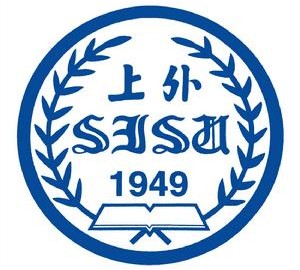I. Phrase Translation
1. Austerity measures: 财政紧缩措施
2. UNESCO: 联合国教科文组织( United Nations Educational,Scientific and Cultural Organization )
3. The US Senate: (美国)参议院
4. APEC: 亚太经济合作组织亚太经合组织(Asia-Pacific Economic Cooperation)
5. Washington Post: (美国)《华盛顿邮报》
6. NATO: 北大西洋公约组织(North Atlantic Treaty Organization)
7. Arab Spring: 阿拉伯之春
8. Gary Locke: 骆家辉 (原美国驻华大使)
9. Reuters:(英国)路透社
10. Wall Street Journal:(美国)《华尔街日报》
II. 中文词汇翻译成英文
十二五规划:Twelfth Five-Year Plan
十七届六中全会:the Sixth Plenary Session of the seventeenthCentral Committee
全国人大:NPC ( National People’s Congress )
新华社:the Xinhua News Agency
软实力: Soft Power
中美战略经济对话:China-US Strategic and EconomicDialogue
上海合作组织:SCO ( Shanghai Cooperation Organization )
珠江三角州:Pearl River Delta
西气东输:project of natural gas transmission from West to East China; West–East Gas Pipeline
北京共识: Beijing Consensus
II. Passage translation
Section A English to Chinese
Reforming education
-The great schools revolution
Education remains the trickiest part of attempts to reform the public sector. But as ever more countries embark on it, some vital lessons are beginning to be learned
Sep 17th 2011 | DRESDEN, NEW YORK AND WROCLAW| from the print edition
FROM Toronto to Wroclaw, London to Rome, pupils and teachers have been returning to the classroom after their summer break. But this September schools themselves are caught up in a global battle of ideas. In many countries education is at the forefront of political debate, and reformers desperate to improve their national performance are drawing examples of good practice from all over the world.
Why now? One answer is the sheer amount of data available on performance, not just within countries but between them. In 2000 the Programme for International Student Assessment (PISA) at the OECD, a rich-country club, began tracking academic attainment by the age of 15 in 32 countries. Many were shocked by where they came in the rankings. (PISA’s latest figures appear in table 1.) Other outfits, too, have been measuring how good or bad schools are. McKinsey, a consultancy, has monitored which education systems have improved most in recent years.
Technology has also made a difference. After a number of false starts, many people now believe that the internet can make a real difference to educating children. Hence the success of institutions like America’s Kahn Academy (see article). Experimentation is also infectious; the more governments try things, the more others examine, and copy, the results.
Above all, though, there has been a change in the quality of the debate. In particular, what might be called “the three great excuses” for bad schools have receded in importance. Teachers’ unions have long maintained that failures in Western education could be blamed on skimpy government spending, social class and cultures that did not value education. All these make a difference, but they do not determine outcomes by themselves.
The idea that good schooling is about spending money is the one that has been beaten back hardest. Many of the 20 leading economic performers in the OECD doubled or tripled their education spending in real terms between 1970 and 1994, yet outcomes in many countries stagnated—or went backwards. Educational performance varies widely even among countries that spend similar amounts per pupil. Such spending is highest in the United States—yet America lags behind other developed countries on overall outcomes in secondary education. Andreas Schleicher, head of analysis at PISA, thinks that only about 10% of the variation in pupil performance has anything to do with money.
Many still insist, though, that social class makes a difference. Martin Johnson, an education trade unionist, points to Britain’s “inequality between classes, which is among the largest in the wealthiest nations” as the main reason why its pupils underperform. A review of reforms over the past decade by researchers at Oxford University supports him. “Despite rising attainment levels,” it concludes, “there has been little narrowing of longstanding and sizeable attainment gaps. Those from disadvantaged backgrounds remain at higher risks of poor outcomes.” American studies confirm the point; Dan Goldhaber of the University of Washington claims that “non-school factors”, such as family income, account for as much as 60% of a child’s performance in school.
Yet the link is much more variable than education egalitarians suggest. Australia, for instance, has wide discrepancies of income, but came a creditable ninth in the most recent PISA study. China, rapidly developing into one of the world’s least equal societies, finished first.
Culture is certainly a factor. Many Asian parents pay much more attention to their children’s test results than Western ones do, and push their schools to succeed. Singapore, Hong Kong and South Korea sit comfortably at the top of McKinsey’s rankings (see table 2). But not only do some Western countries do fairly well; there are also huge differences within them. Even if you put to one side the unusual Asians, as this briefing will now do, many Western systems could jump forward merely by bringing their worst schools up to the standard of their best.
So what are the secrets of success? Though there is no one template, four important themes emerge: decentralisation (handing power back to schools); a focus on underachieving pupils; a choice of different sorts of schools; and high standards for teachers. These themes can all be traced in three places that did well in McKinsey’s league: Ontario, Poland and Saxony.
Section B Chinese to English
国务院新闻办发表《中国特色社会主义法律体系》白皮书,这是2011年10月27号发布的。以下是其中的一些内容。
社会实践是法律的基础,法律是实践经验的总结、提炼。社会实践永无止境,法律体系也要与时俱进。建设中国特色社会主义是一项长期的历史任务,完善中国特色社会主义法律体系同样是一项长期而又艰巨的任务,必须随着中国特色社会主义实践的发展不断向前推进。
法律的生命力在于实施。中国特色社会主义法律体系的形成,总体上解决了有法可依的问题,对有法必依(试卷中还是“有法可依”)、执法必严、违法必究提出了更为突出、更加紧迫的要求。中国将积极采取有效措施,切实保障宪法和法律的有效实施,加快推进依法治国、建设(试卷中居然是“将是”)社会主义法治国家的进程。
上海外国语大学MTI真题下载:百度云
真题来自互联网 短语翻译答案由MTIZT.COM提供
